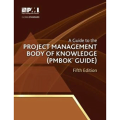
Not too long ago I was presiding over the tender opening for a small bridge replacement project. I had recently heard of some stories from another, unrelated, government contact that a certain contractor had ended up in court with them, and it turned out that after opening several tenders that this particular contractor was the low bidder (so far). I was holding my breath until the last bid was opened, who was a contractor I highly trusted. They ended up being the low bidder by a fraction – 0.07%. As well as giving me a sigh of relief, they did very well financially because of solid estimating.
Similarly on the engineering side, there’s nothing worse than finding out you’ve won a competitive proposal only to learn that your price was 30, 40 or more percent below the other proposals. This means you could have taken some free money just by doing better estimating (or you missed something and will lose your shirt). We are programmed to think that it is best to be the low bidder, but there’s a limit. Cost estimates need to be within a certain range, and also take into account the organization’s desire to win the work.
Estimates that are too far out, in either direction, look bad on the person doing the estimating.
Today we will learn about estimating.
Cost Estimating Relationships (CER)
These are established relationships of unit cost for complex items, and every industry has them. For example, building a fence might cost $120 per foot. There isn’t a direct relationship between the cost of the fence and the length, but there is an indirect one. All the other factors are conglomerated into one price.
The project manager should be on the constant lookout for these relationships. In fact, the better you can get a handle on how much things cost, the better an estimator you’ll be. You should try to be constantly matching prices with work packages.
Background Information
Many times when I’ve opened a spreadsheet to start an estimate I draw a bit of a blank as to where to begin. I wonder if there’s some information I can collect, or something I’m missing besides filling in my own guesses and submitting it. In that spirit, here is a good checklist of things to do before you begin an estimate.
- Previous projects. Find other projects that have similar work, or work packages, and look for the actual costs. Usually estimated costs are easier to find, so try your best to get the actual ones.
- Interviews with experts. There’s nothing quicker and more certain than an estimate from an expert in the subject matter.
- Professional reference material. You would be surprised how many manuals out there contain unit price estimates for almost any task in any industry. If there isn’t one, start your own!
- Knowledge. Learn about the tasks that the project entails. Educate yourself on the technical details. Become familiar with the project.
Ideally there is some sort of “lessons learned” database where project managers have recorded issues that they have encountered. But this is rare.
Resources
Each task in the work breakdown structure can consume:
- Time (i.e. labor)
- Materials
- Overhead
I will talk about each one individually.
Time and Labor
Often there are functional managers in charge of a certain technical division whom you draw on to provide labor to the project (and provide estimates). If this is the case, you have it easy. Be aware, however, that functional managers will almost always estimate on the high side.
If you need to estimate labor hours yourself, here are some tips:
- Dig up any historical information. There are very few projects where everything is new. Even if it is, finding out the number of hours for a similar or related work package gives you a guideline.
- Talk to subject matter experts who can provide excellent estimates. Again, be aware that they will err on the high side.
- Use cost estimating relationships (CER) which are established unit costs for the major variable involved. Such as the number hours to produce an interim report.
If the project is anticipated to be longer than a year you should consider the cost inflation involved as well. Labor rates can only be reliably estimated within about 12 months.
Materials
This category includes almost everything that is not labor:
- Materials. The purchases required by project. Cost projections, scrap factors, and shelf life for perishable items need to be considered.
- Purchased parts. The constituent parts that are ordered to produce products.
- Subcontracts. Subconsultants and subcontractors are often required to support in-house capabilities.
- Freight. Delivery of factory shipments.
- Travel. Project traveling expenses.
- Other.
For small dollar value projects, travel and freight can be expressed as percentages of other categories or of the whole, say 3 – 5%.
Again, cost estimating relationships are extremely useful here. The amount typically paid for a certain type of material, subcontractor, or other expense can result in some excellent guidelines.
Overhead rates
Most companies have an overhead rate which is a markup of all unit prices used during estimating. It includes all of the office costs, executive salaries, employee benefits, and anything else that the corporation requires to carry on business but is not directly billable.
Although determining the overhead rate is outside the scope of project management, I will explain the basics here.
The corporation (accountants, etc.) will compile the total overhead amount for the company each year. This amount gets divided into the appropriate work units (projects, employees, etc.) to arrive at an overhead cost per unit. In consulting, for example, the overhead will be divided by the total number of chargeable hours worked by all employees to determine the hourly charge out rate. Along the way, the corporation will analyze any anticipated differences between last year and the coming year.
Suffice it to say, for most project managers the overhead is a number that everything must be multiplied by, to support the corporation.
Contingencies
Most estimators provide a certain contingency, say 10 – 25% for each work item or per phase. This is a good practice, but I am firm believer in Parkinson’s Law:
- Work effort expands to fill the time allocated to it.
Thus, I believe that most contingencies are consumed just because they are there, not because they were needed. A method is gaining traction called the Critical Chain Method which attempts to influence project teams to complete the work without using the contingency.
Other Considerations
Sometimes the final estimate is determined by the market rather than actual cost estimates, as in the situation where the estimated cost is deemed insufficient to win a competitive bid or proposal. In this case the company must determine how badly it wants to win and how aggressively to change the estimate. In this case, the actual estimated cost should be kept intact and a factor applied to the bottom line, aid in future estimating.
In other cases the potential for follow on work mean the company might decide to perform the project for cheaper. Again, it is prudent to keep the original estimates intact. As a quick thought exercise, let’s say there is a 1 in 5 (20%) chance of securing a $50,000 future project. It might be worth discounting the current project by somewhat less than $10,000, say $5,000.
Today’s Task
Today’s task is to estimate the cost of each task in the Work Breakdown Structure for the project you chose in the introductory post.
- Consider the time (i.e. labor) requirements of the task.
- Think about the materials required.
- Take into account the external consultant and contractor costs.
- Make sure overhead is included, if applicable.






